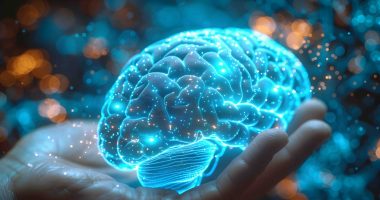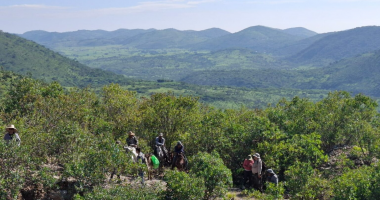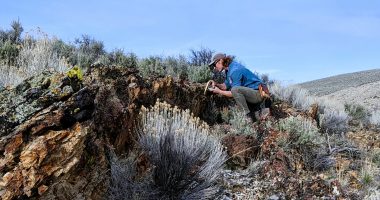- Electric vehicle giant Tesla’s latest showcase brought battery metals into the spotlight this week
- The historical event, dubbed Battery Day, took place on Wednesday and widely impacted global markets
- During the showcase, Tesla Chief Executive Elon Musk announced the company would enter the mining industry after it secured the rights to a lithium clay deposit in Nevada
- In addition, the company will divest from cobalt, the ‘blood diamond of batteries,’ and instead turn to a mineral more easily and ethically mined – manganese
- Finally, these changes are part of Tesla’s grand plan to build a cheaper, more efficient battery that will, in turn, deliver Elon to his overall goal; an EV which costs just US$25,000 (around A$35,320)
- The Battery Day news made waves down under— Aussie resources stocks like Euro Manganese soared, while lithium producers like Galan Lithium remained upbeat
- But there may be even more opportunity for our homegrown stocks if they look to the global market
Electric vehicle giant Tesla’s latest showcase brought battery metals into the spotlight this week.
The historical event, dubbed Battery Day, took place on Wednesday and widely impacted global markets.
While Battery Day sent Tesla stock tumbling — the NASDAQ lister shed 15 per cent come Wednesday night’s close — some of our homegrown explorers and producers rose into the green.
News that Tesla would enter the mining industry, phase out cobalt, and aim to produce a US$25,000 EV sent some small-cap stocks soaring.
So, now that Battery Day has come to an end, is the green run here to stay? Or should producers look beyond Tesla to find their niche in an increasingly competitive market?
About Battery Day
In surely one of the most unique investor presentations in history, Tesla’s Battery Day required those investors keen to attend the outdoor event to park themselves in a Tesla vehicle.
Then, once those socially distanced investors were secure, they could either tune in to the radio to listen to speakers or wind down the window and let the world in.
Investors honked approval at speakers and presenters, and the entire experience was very on-brand for a company with a history of subverting expectations.
There were three takeaways from the milestone event: First, Tesla will enter the mining industry after it secured the rights to a 10,000-acre lithium clay deposit.
Second, Tesla will no longer use cobalt in its car batteries but instead, pivot towards metals like manganese and nickel.
Finally, these changes are part of the grand plan to build a cheaper, more efficient battery that will in turn deliver Elon to his overall goal; an EV which costs just US$25,000 (around A$35,320).
“It’s absolutely critical that we make cars that people can actually afford,” Musk said. “Affordability is key to how we scale.”
In Australia, Tesla’s Model 3 EV currently retails for around A$73,000, not including add-ons. As a result, the sought-after price point may still be a while off.
Musk the miner
Tesla’s move into mining was initally flagged at Tesla’s 2019 shareholder meeting.
It’s largely because Elon believes that Lithium is an abundant resource. Through integration, the Tesla Chief predicts he can lower the costs of lithium production by up to 33 per cent.
At Battery Day, he revealed the company had secured a deposit in Nevada, where it can build a cathode plant and practically bring the factory to the mine.
Significantly, Elon Musk says the company’s moving forward with a new way to extract lithium from ore by using table salt — a more eco-friendly process with less water wastage.
“Nobody’s done this before, to the best of my knowledge, nobody’s done this,” the Tesla CEO said. “It’s a very sustainable way of obtaining lithium.”
Cobalt out, manganese in
Aside from Tesla’s pivot to mining, the other big takeaway from Battery Day was Tesla’s move from cobalt towards cathode minerals which are easy to ethically source.
In the past, cobalt has been dubbed the ‘blood diamond of batteries.’ That’s primarily due to ethical issues surround the way it’s mined and sourced — scaring many EV manufacturers, including Tesla, away.
But the decision to move away from cobalt has led Tesla to another metal: manganese.
Specifically, the new cathodes Tesla is aiming to produce will contain one-third manganese and two-thirds nickel.
“It’s relatively straightforward to do a cathode that’s two-thirds nickel and one-third Manganese, which will allow us to make 50 per cent more cell volume with the same amount of nickel” Musk said.
Aussie stocks
Tesla’s move into the mining sector prompted investors to hit the eject button and dump the stock on Wednesday. But the news hit differently down under and proved there was opportunity yet for materials stocks to support the EV giant.
In fact, there were some ASX diamonds that managed to not only survive, but thrive.
Predictable, the big winner was manganese. Euro Manganese (ASX/TSXV:EMN) climbed 40.7 per cent after the good news broke.
The resource company is currently sitting on Europe’s largest manganese deposit, putting it front and centre in any discussions involving EV expansion throughout Europe.
Lithium producers also surged after Musk said he would enter the mining industry.
Galan Lithium (ASX:GLN), a Perth-based lithium brine concentrate explorer operating in the ‘Lithium Triangle,’ is situated within an exploration region straddling Chile, Argentina and Bolivia. Significantly, this area boasts approximately 50 per cent of the world’s lithium.
Lithium brines contain much higher concentrations of lithium when compared the hard rock form of the mineral, and if an explorer can find a deposit which isn’t riddled with impurities, it can outperform the big miners when it comes to pricing.
Galan CEO, JP Vargas de la Vega, said that he was “very excited” by the prospect of Tesla entering the mining space, saying all [Tesla] needed was “one little delay” and then the lithium industry “would boom.”
Broadly speaking, the growing demand for battery materials could also encourage manufacturers to look for new technologies.
For example, small-cap Australian alumina producer Altech Chemicals (ASX:ATC) yesterday revealed it had reached the final stages of development for super high purity alumina, a chemical which could be used in the next generation of lithium-ion batteries.
That, coupled with the buzz around battery stocks not named cobalt, sent ATC’s share price up 25 per cent.
A world of opportunity
Tesla’s Battery Day showcased the company’s grand plans for the electric vehicle industry.
But there’s more to EV’s than just Tesla.
The global electric vehicle market is tipped to produce more than 80 million cars over 2020, of which Tesla should account for about 25 per cent.
The EV market can largely be divided into three geographical sectors — North America, Asia and Europe.
Broadly speaking, Tesla is the obvious global market leader and is unlikely to be knocked off that perch anytime soon.
However, there are some 400 registered Chinese electric vehicle manufacturers which need lithium-ion batteries.
That leaves the majority of the world’s electric vehicle manufacturers without secure lithium supplies, creating a viable market for smaller, hungrier Australian producers.
The bottom line? There’s still some charge left in our battery metals sector.





